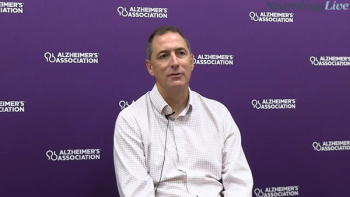
The study suggests that overall, migraine is not directly related to traditional CVRFs, and further research is needed, especially in younger populations, to explore these relationships over longer periods.

Marco Meglio, Assistant Managing Editor for NeurologyLive, has been with the team since October 2019. Follow him on Twitter @marcomeglio1 or email him at [email protected]

The study suggests that overall, migraine is not directly related to traditional CVRFs, and further research is needed, especially in younger populations, to explore these relationships over longer periods.

Peter Vanderklish, PhD, chief science officer at Spingogenix, commented on a recently initiated phase 2 trial assessing investigational SPG302, a synaptic-regenerative agent in development for Alzheimer disease.

AOC 1044, an investigational antisense oligonucleotide treatment for patients with Duchenne muscular dystrophy, has previously been granted orphan drug and fast track designation by the FDA.

Medtronic's asleep DBS approval could expand treatment options for patients unable to tolerate awake surgery, enhancing access to deep brain stimulation therapy.

The drug showed a highly favorable pharmacokinetic profile, with maximal concentrations (Tmax) achieved within 1.5 to 2 hours and a mean terminal elimination half-life ranging between 8 to 12 hours.

Test your neurology knowledge with NeurologyLive®'s weekly quiz series, featuring questions on a variety of clinical and historical neurology topics. This week's topic is on care of idiopathic hypersomnia.

Early use of Ceribell’s POC-EEG system significantly improves detection of nonconvulsive seizures, reduces ICU length of stay, and enhances patient outcomes compared to conventional EEG.

Results showed that the DAAE Score performs well, with consistent risk estimates across the derivation (JMSC), internal-validation (JMSC), and external-validation (MSCA) dataset across treatment centers internationally.

A recent trial showed that post-stroke patients using a socially assistive robot (SAR) for upper-extremity rehab achieved significant motor function improvements, with 100% meeting or exceeding minimal clinical improvements.

Mind Moments®, a podcast from NeurologyLive®, brings you an exclusive interview with Phil Jochelson, MD. [LISTEN TIME: 20 minutes]

Scholar Rock's TOPAZ phase 2 trial shows sustained motor function improvements in SMA patients treated with apitegromab over 48 months, with phase 3 results expected soon.

Anavex Life Sciences intends to submit a full regulatory application for blarcamesine as a potential treatment for AD in Europe by Q4 2024.

Marketed as Crexont, the combination extended- and immediate-release treatment is indicated for treatment of PD, and is anticipated to be available in the United States in September 2024.

The positive data from this Phase 1a trial will inform the dosing for the upcoming Phase 1b portion in patients with AD, expected to commence in the second half of 2024.

The personalized medicine lead at Linus Health provided clarity on a new outcome measure that captures various perspectives about what matters to individuals and their brain health.

In pediatric patients, the average treatment intensity was 22.8% of the maximum stimulator intensity, with slightly lower intensity levels compared to previous studies in adolescents and adults.

MoMeNtum will evaluate the efficacy and safety of DNTH103, administered subcutaneously every two weeks over a 17-week period, followed by a 52-week open-label extension to collect additional safety and efficacy data.

Lecanemab, an antiamyloid medication, was previously approved for the treatment of AD in the US in June 2023.

Known as REVITALYZ, the double-blind, placebo-controlled study will assess the effect of once-nightly sodium oxybate on the primary end point of change in Epworth Sleepiness Scale over a 14-week period.

The professor of neurology and Diana Davis Spencer Foundation Chair at the Jackson Laboratory provided context on a presentation from AAIC 2024 highlighting the ways genetics can impact microglia function and its relation to Alzheimer disease. [WATCH TIME: 3 minutes]

Test your neurology knowledge with NeurologyLive®'s weekly quiz series, featuring questions on a variety of clinical and historical neurology topics. This week's topic is on disparities on stroke.

In addition to showing a slowed disease progression, TPN-101-treated patients had lowered levels of key biomarkers involving neurodegeneration and neuroinflammation.

The meeting with the American Neurologic Association fosters collaboration, networking, and joint sessions, enhancing knowledge sharing among academic neurologists.

Enrollment in the dose level 2 expansion cohort is expected to complete early in Q3 2024, with initial strength and functional data anticipated in the second half of 2024.

The 3-year data highlighted the safety profile of lecanemab and its disease-modifying effects on tau accumulation and other biomarkers related to AD pathology.

In this episode, the panel discusses the emerging challenges for neurology departments, the shortage of neurologists, and the ways to disseminate between useful and useless information amid a busy career.

Although the primary endpoint of cerebral glucose metabolic rate change was not met, secondary endpoints showed significant benefits in brain volume and cognitive measures, further supporting the potential of GLP-1 agonists in AD.

CT1812, a sigma-2 receptor ligand, showed favorable changes in biomarkers like Aß40, Aß42, and neurofilament light (NfL), indicating its potential as a synaptoprotective agent.

Higher MIND diet scores correlate with larger hippocampal volume in older adults, suggesting potential benefits for brain health.

John England, MD, and Lisa Merlin, MD, commented on the significant changes to neurology over the years and how education aligns with the latest in treatments advancements and understanding of neurological disorders.